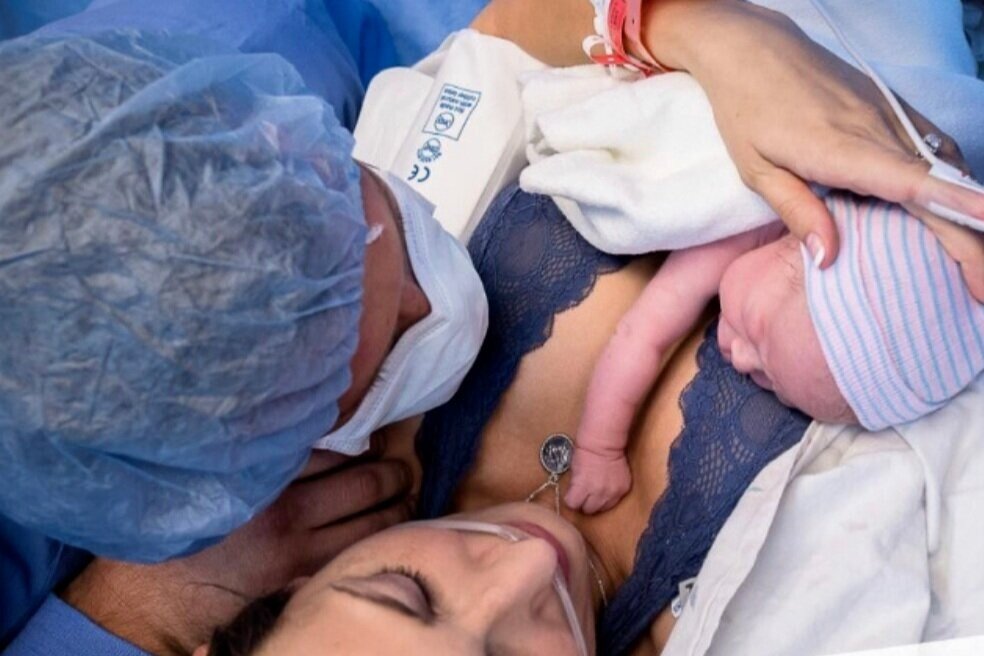What is recovery from a c-section like?
Photo Credit: Evidence Based Birth
This isn’t the stuff that’s talked about at baby showers. Don’t worry, we’ve got you covered.
So what should I know about cesarean birth recovery? What is it really like?
First off, some facts about cesarean birth (from ProDoula):
The cesarean birth rate in the United States is approximately 31.8%
A cesarean is the most commonly performed major operating room procedure in the U.S.
A cesarean birth takes about 30-45 minutes
In some hospitals, skin-to-skin contact with the baby is permitted in the operating room
Some hospitals will use a clear drape so that you can witness your baby’s birth
Once a cesarean birth, always a cesarean birth isn’t always true
So what does recovery actually look like after a cesarean birth?
Here are some things you should know so that you can prioritize your healing during this delicate and vulnerable time.
1. What you really feel like after your cesarean. 🛏️
The anesthesia (given by epidural) that numbs parents for surgery can make you feel numb, nauseous, shivery or drowsy for a few hours after. The pain from the incision, clamps, stitches, and gas build-up is most commonly relieved by medication (Tip: Set a timer so you take them before you feel pain return), though there are alternatives to that, too. Gentle movement is encouraged to help ease gassiness and prevent blood clots. In the first six months, it’s common to feel soreness, itchiness, or numbness at the incision site.
2. Recovering means dealing with lochia and your incision, too. 🚧
After a cesarean, parents still have lochia, the bloody mucousy vaginal discharge from the wound where the placenta detached from the uterus. There’s also an incision site from where you birthed your baby. Some tips for incision care: shower normally (pat dry), avoid baths, hold a pillow when you cough or sneeze, wear high-waisted underwear and pants, avoid stairs if possible, and take gentle walks daily
3. There’s a different pace of healing with a c-section. ⌚
Your body is healing from birth and a major surgery that’s deeply affected your core muscles. With your care provider, you’ll learn your timeline for doing things like lifting objects heavier than your baby, household chores, driving, exercise, and sex. Be gentle and patient with yourself as you do.
4. Your story matters. 📚
Cesarean births are not all the same! They can be planned, an emergency, or chosen for non emergency reasons. You may feel proud and glad for your cesarean, or disappointed but grateful, or even have concerns about how it happened. Whatever your story, there’s support available to help you with the rest. Check out The International Cesarean Awareness Network and La Leche League resources, if you choose to breastfeed after your surgery.
5. You’re not in it alone. 📞
Having support with household chores and newborn care makes a world of a difference in your physical healing and mental and emotional processing. Don’t hesitate to delegate and reach out for help! Really!!
❤️Bring in your village of helpers—neighbors, friends, family members.
❤️Take a childbirth and labor class (like this one) so you know what to expect and how to cope.
❤️Hire a labor doula for physical, emotional and educational support.
❤️Hire a postpartum doula. Since it will be 4-8 weeks until your first OB post-birth visit, ur doula’s check-ins offer a more timely opportunity to ask questions or express concerns.
For more help navigating the seismic shift into parenthood, reach out to the Boston Area Doulas team.
www.bostonareadoulas.com

